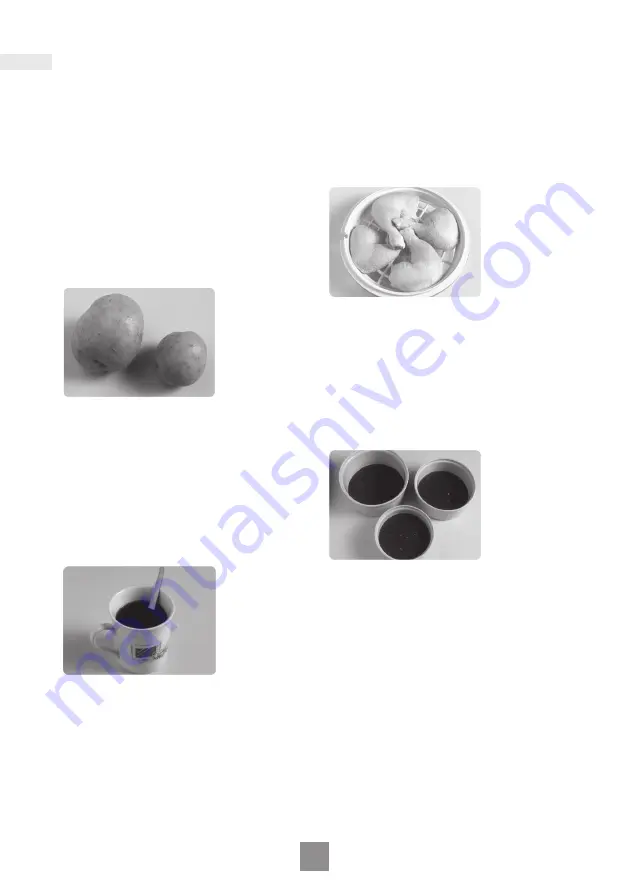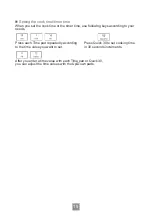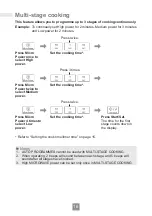
8
General guidelines
MOISTURE CONTENT
Many fresh foods e.g. vegetables and
fruit, vary in their moisture content
throughout the season. For this reason
cooking time may have to be adjusted.
Dry ingredients e.g. rice, pasta, can dry
out during storage so cooking time may
differ.
DENSITY
Porous airy foods heat more quickly
than dense heavy foods.
SHAPE
Even shapes cook evenly. Food cooks
better by microwave when in a round
container rather than square.
STARTING TEMPERATURE
The colder the food, the longer it takes
to heat up. Food from a fridge takes
longer to reheat than food at room
temperature.
LIQUIDS
All liquids must be STIRRED BEFORE,
DURING AND AFTER heating. Water
must be stirred before and during
heating, to avoid eruption.
Do not heat liquids that have previously
been boiled. DO NOT OVERHEAT.
TURNING AND STIRRING
Some foods require stirring during
cooking. Meat and poultry should be
turned after half of the cooking time.
ARRANGING
Individual foods e.g. chicken portions
or chops, should be placed on a dish
so that the thicker parts are towards
the outside.
CHECKING FOOD
It is essential that food is checked
during and after a recommended
cooking time, even if an AUTO
PROGRAMME has been used (just as
you would check food cooked in a
conventional oven). Return the food to
the oven for further cooking if
necessary.
DISH SIZE
Follow the dish sizes given in the
recipes, as these affect the cooking
and reheating times.
A quantity of food spread in a bigger
dish cooks and reheats faster.
CLING FILM
Cling film helps keep the food moist
and the trapped steam assists in
speeding up cooking time. Pierce
before cooking to allow excess steam
to escape. Always take care when
removing cling film from a dish as the
build-up of steam will be very hot.











































